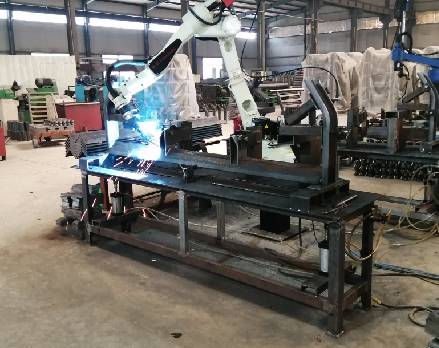 Afrikaans
Afrikaans  Albanian
Albanian  Amharic
Amharic  Arabic
Arabic  Armenian
Armenian  Azerbaijani
Azerbaijani  Basque
Basque  Belarusian
Belarusian  Bengali
Bengali  Bosnian
Bosnian  Bulgarian
Bulgarian  Catalan
Catalan  Cebuano
Cebuano  Corsican
Corsican  Croatian
Croatian  Czech
Czech  Danish
Danish  Dutch
Dutch  English
English  Esperanto
Esperanto  Estonian
Estonian  Finnish
Finnish  French
French  Frisian
Frisian  Galician
Galician  Georgian
Georgian  German
German  Greek
Greek  Gujarati
Gujarati  Haitian Creole
Haitian Creole  hausa
hausa  hawaiian
hawaiian  Hebrew
Hebrew  Hindi
Hindi  Miao
Miao  Hungarian
Hungarian  Icelandic
Icelandic  igbo
igbo  Indonesian
Indonesian  irish
irish  Italian
Italian  Japanese
Japanese  Javanese
Javanese  Kannada
Kannada  kazakh
kazakh  Khmer
Khmer  Rwandese
Rwandese  Korean
Korean  Kurdish
Kurdish  Kyrgyz
Kyrgyz  Lao
Lao  Latin
Latin  Latvian
Latvian  Lithuanian
Lithuanian  Luxembourgish
Luxembourgish  Macedonian
Macedonian  Malgashi
Malgashi  Malay
Malay  Malayalam
Malayalam  Maltese
Maltese  Maori
Maori  Marathi
Marathi  Mongolian
Mongolian  Myanmar
Myanmar  Nepali
Nepali  Norwegian
Norwegian  Norwegian
Norwegian  Occitan
Occitan  Pashto
Pashto  Persian
Persian  Polish
Polish  Portuguese
Portuguese  Punjabi
Punjabi  Romanian
Romanian  Russian
Russian  Samoan
Samoan  Scottish Gaelic
Scottish Gaelic  Serbian
Serbian  Sesotho
Sesotho  Shona
Shona  Sindhi
Sindhi  Sinhala
Sinhala  Slovak
Slovak  Slovenian
Slovenian  Somali
Somali  Spanish
Spanish  Sundanese
Sundanese  Swahili
Swahili  Swedish
Swedish  Tagalog
Tagalog  Tajik
Tajik  Tamil
Tamil  Tatar
Tatar  Telugu
Telugu  Thai
Thai  Turkish
Turkish  Turkmen
Turkmen  Ukrainian
Ukrainian  Urdu
Urdu  Uighur
Uighur  Uzbek
Uzbek  Vietnamese
Vietnamese  Welsh
Welsh  Bantu
Bantu  Yiddish
Yiddish  Yoruba
Yoruba  Zulu
Zulu Exploring the Benefits and Applications of Herringbone Rubber Lagging in Industrial Settings
Understanding Herringbone Rubber Lagging An Essential Component in Industry
Herringbone rubber lagging is an innovative material widely utilized in various industrial applications, particularly in the field of conveyor systems and machinery. It is designed to enhance grip, reduce wear, and protect underlying components, ensuring efficient operation in demanding environments. This article explores the key features, benefits, and applications of herringbone rubber lagging, along with considerations for selection and maintenance.
What is Herringbone Rubber Lagging?
Herringbone rubber lagging refers to a specific pattern and type of rubber material that is attached to the surfaces of industrial equipment, most commonly conveyor belts and pulleys. The herringbone pattern features interlocking V-shaped designs, which not only add aesthetic appeal but also serve functional purposes. The rubber is typically formulated to withstand harsh industrial conditions, including exposure to heavy loads, abrasion, and varying temperatures.
Key Features
1. Enhanced Traction The herringbone pattern provides superior traction, ensuring that materials move smoothly along conveyor belts without slipping. This is particularly crucial in industries where safety and efficiency are paramount, such as mining, agriculture, and manufacturing.
2. Wear Resistance The durable rubber compounds used in herringbone lagging are engineered to resist wear and tear, extending the life of both the lagging itself and the machinery it protects. This reduces maintenance costs and downtime, making operations more cost-effective in the long run.
3. Shock Absorption Herringbone rubber lagging acts as a cushioning layer, absorbing shocks and vibrations caused by heavy materials during transportation. This not only protects the equipment but also contributes to smoother operations.
Benefits of Herringbone Rubber Lagging
1. Improved Safety By providing greater grip and traction, herringbone rubber lagging minimizes the risk of materials slipping or falling during transportation, thereby enhancing workplace safety.
2. Increased Efficiency The friction produced by the herringbone pattern allows for smoother movement of materials, resulting in higher conveyor efficiency. This leads to faster processing times and improved overall productivity.
herringbone rubber lagging

3. Reduced Maintenance Costs Due to its durability, herringbone rubber lagging requires less frequent replacement compared to traditional materials. This contributes to lower maintenance costs and reduced operational disruptions.
4. Versatility Herringbone lagging can be used in a variety of applications, from bulk material handling in mines to food processing lines, making it a versatile choice for many industries.
Applications
Herringbone rubber lagging is commonly used in
- Mining Operations To prevent material slippage and ensure efficient movement of ores and coal. - Food Processing In conveyor systems where hygiene is crucial, providing a combination of safety and durability. - Cement and Aggregate Plants To handle heavy aggregates while minimizing wear on machinery. - Automotive and Manufacturing Sectors For conveyor belts that transport components throughout the production line.
Selecting and Maintaining Herringbone Rubber Lagging
When selecting herringbone rubber lagging, several factors should be considered, including the type of materials being transported, the load capacity of the system, and environmental conditions. It's vital to choose a lagging material that aligns with your specific operational needs to optimize performance.
Additionally, regular inspections of the lagging should be conducted to identify wear or damage early. Proper maintenance, including periodic cleaning and timely replacements, will ensure that the lagging continues to perform effectively and prolong its lifespan.
Conclusion
Herringbone rubber lagging is a crucial component that enhances the efficiency, safety, and longevity of industrial equipment. By understanding its features, benefits, and applications, businesses can make informed decisions that improve operational performance and reduce costs. In an ever-evolving industrial landscape, investing in quality materials like herringbone rubber lagging is essential for maintaining a competitive edge.
-
Revolutionizing Conveyor Reliability with Advanced Rubber Lagging PulleysNewsJul.22,2025
-
Powering Precision and Durability with Expert Manufacturers of Conveyor ComponentsNewsJul.22,2025
-
Optimizing Conveyor Systems with Advanced Conveyor AccessoriesNewsJul.22,2025
-
Maximize Conveyor Efficiency with Quality Conveyor Idler PulleysNewsJul.22,2025
-
Future-Proof Your Conveyor System with High-Performance Polyurethane RollerNewsJul.22,2025
-
Driving Efficiency Forward with Quality Idlers and RollersNewsJul.22,2025





























